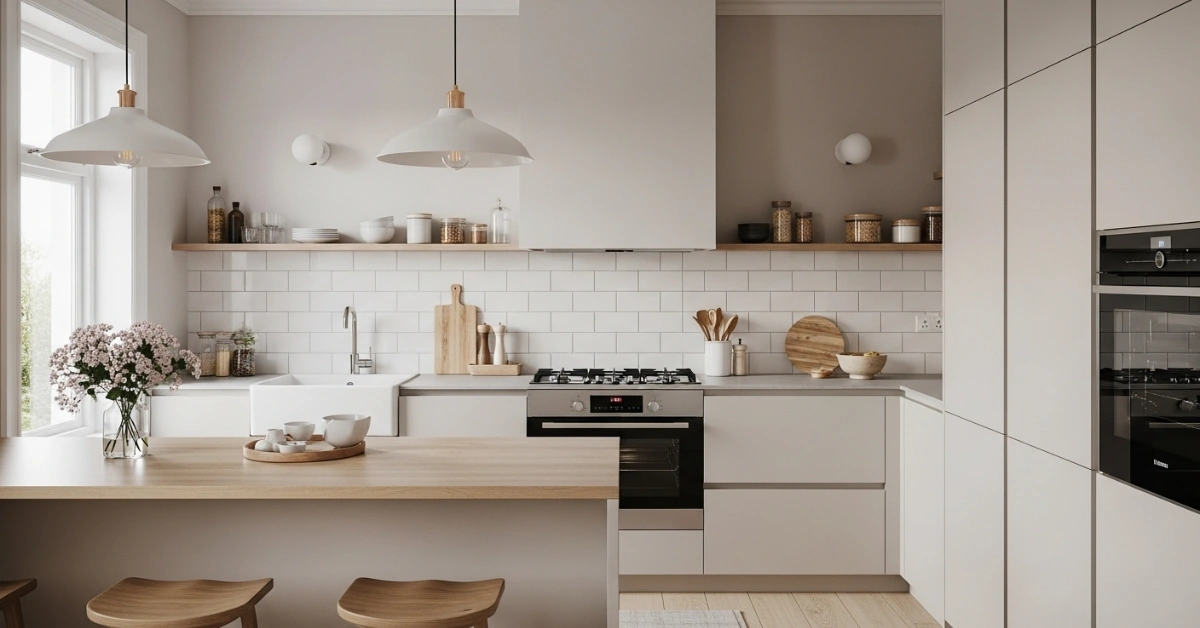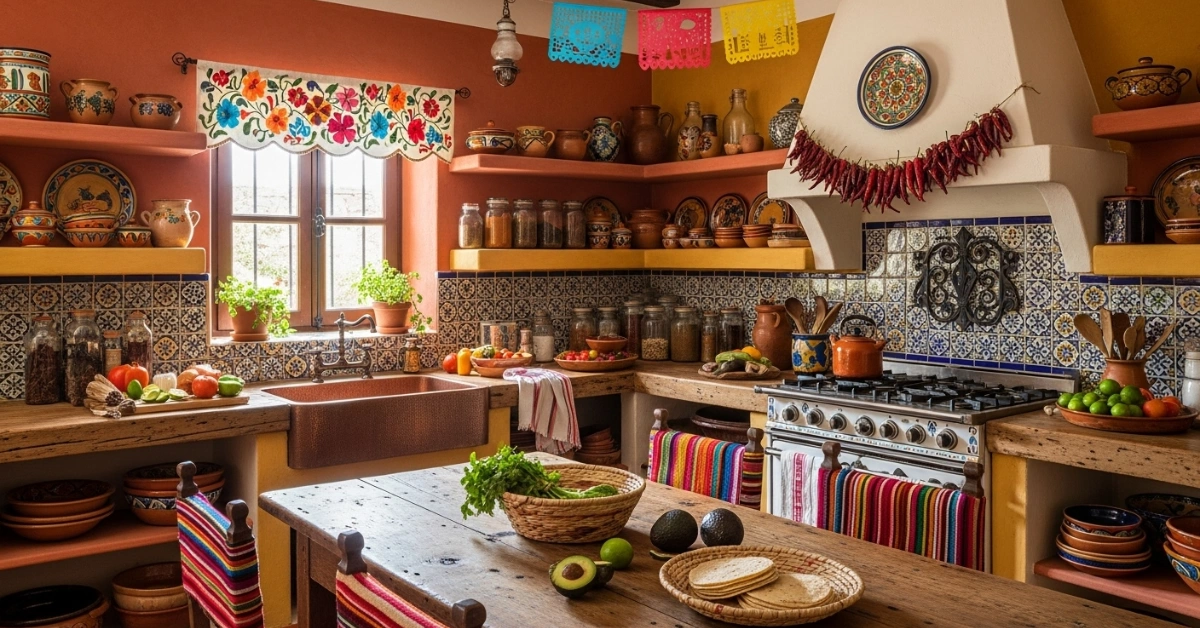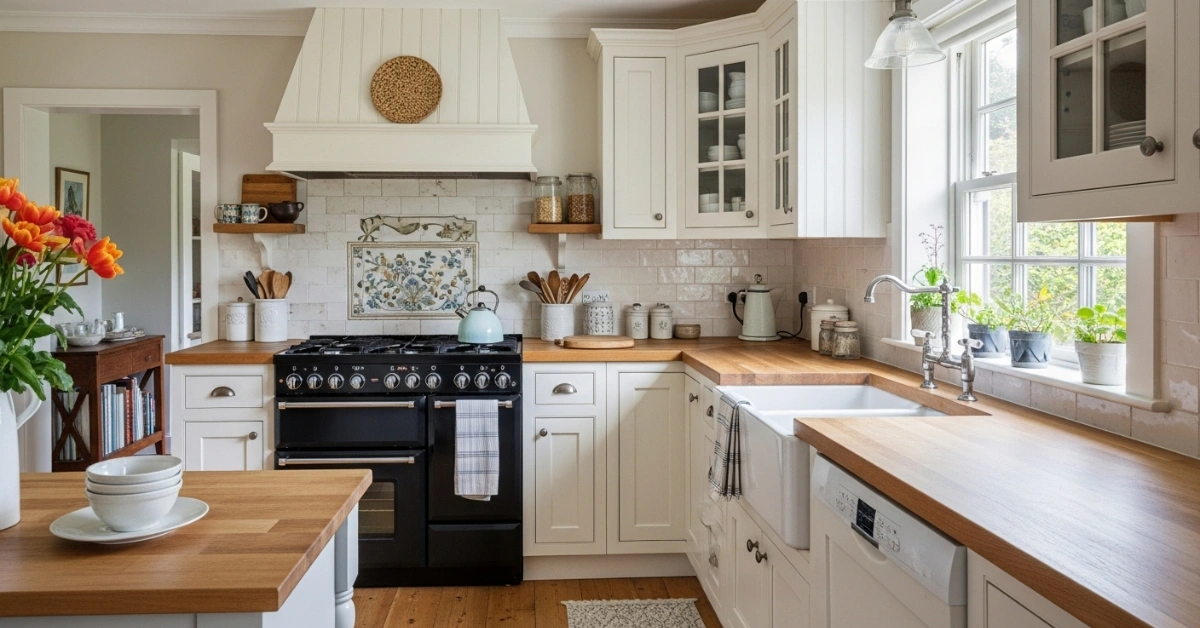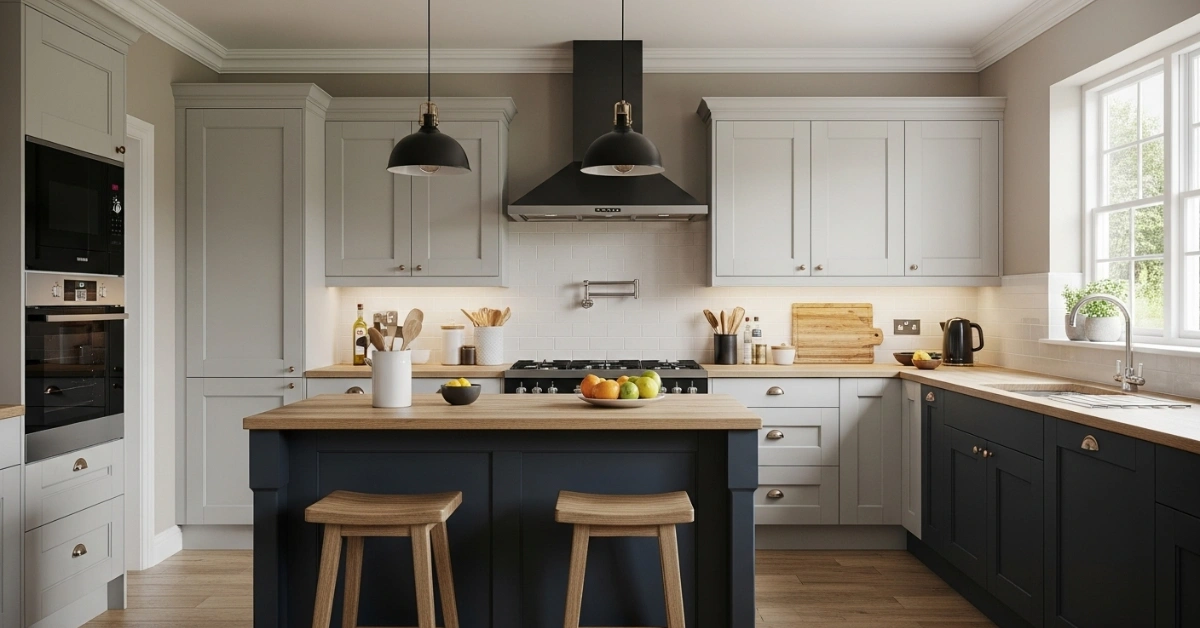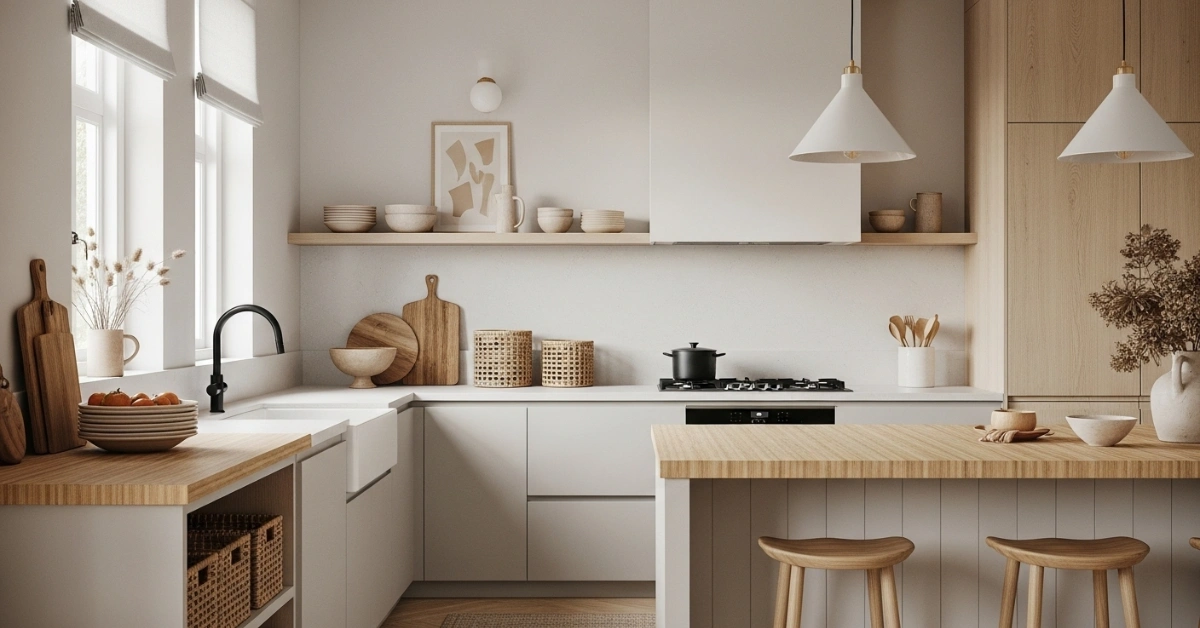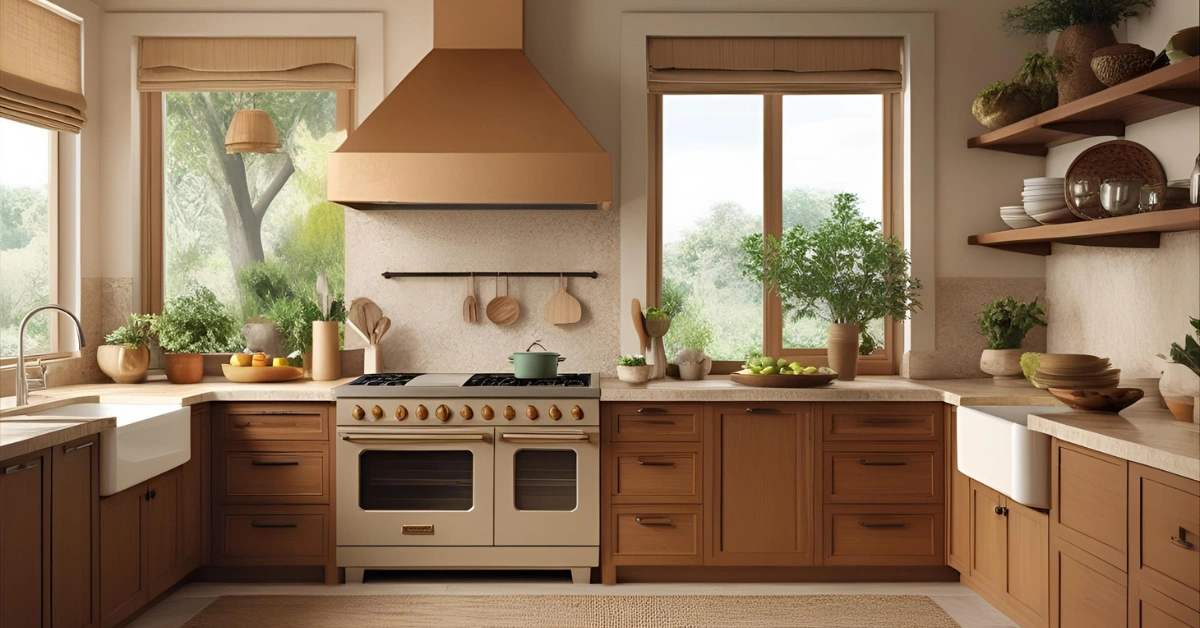Build a Beautiful Desert Kitchen with These 35 Ideas
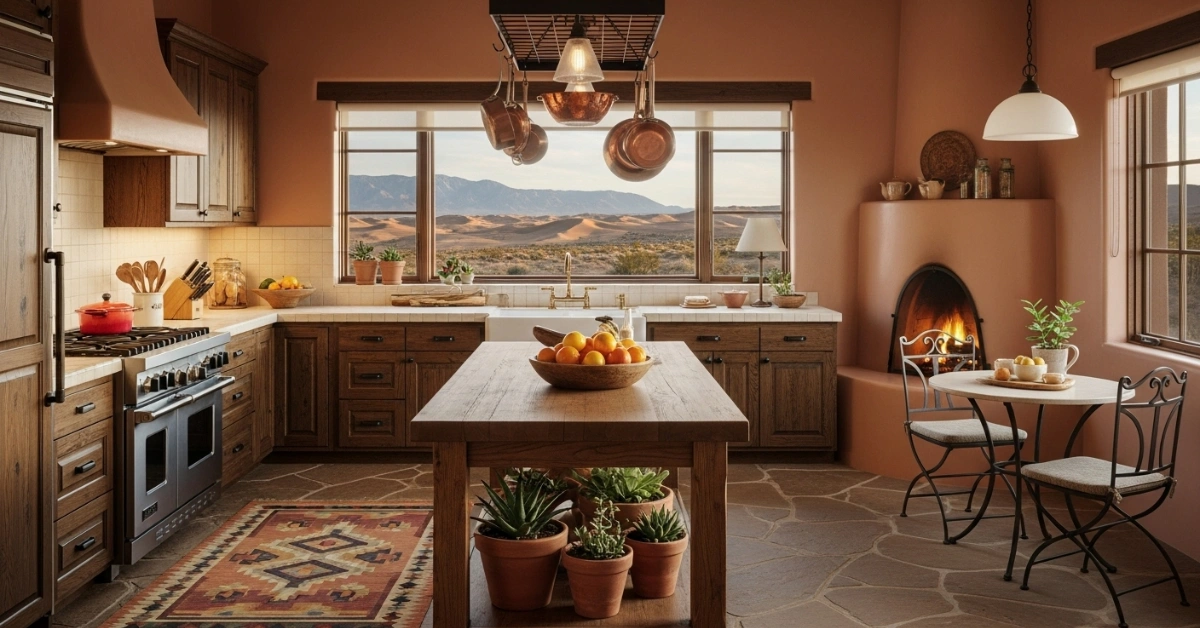
Imagine stepping into a kitchen that feels like a warm, sun-soaked oasis, a space where earthy tones, natural textures, and timeless charm create a welcoming vibe. Many homeowners struggle to design a kitchen that balances style, functionality, and a unique aesthetic, often feeling overwhelmed by endless options or uninspired by generic designs.
A desert kitchen solves this by blending the rugged beauty of desert landscapes with practical, modern elements. This design style draws inspiration from arid regions, incorporating sandy hues, natural materials, and cozy details to craft a space that’s both inviting and functional. In this guide, we’ll explore over 35 design ideas, expert tips, and practical steps to help you create a desert kitchen that reflects your personality and elevates your home.
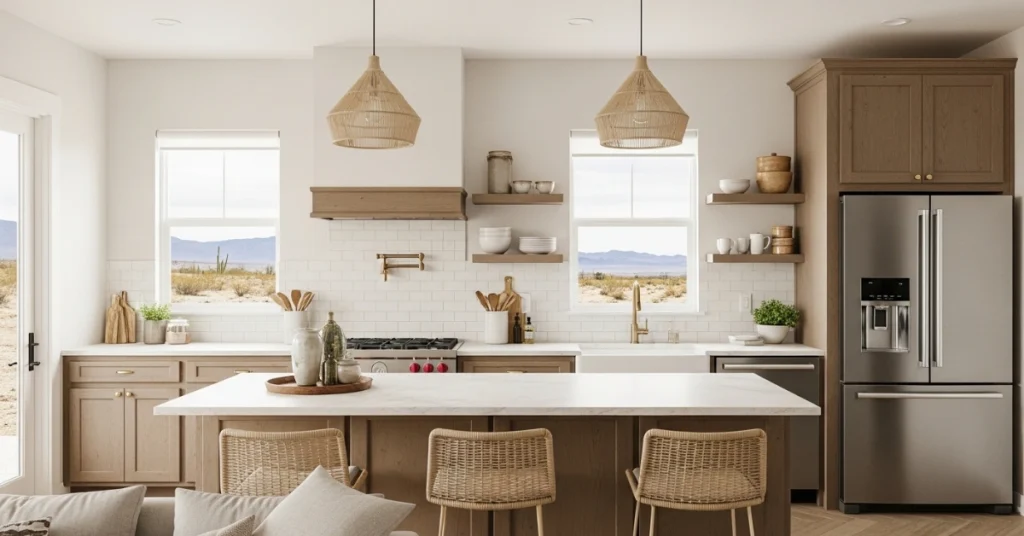
What Is a Desert Kitchen?
A desert kitchen is a design aesthetic inspired by the natural beauty of desert environments, such as those found in the American Southwest, North Africa, or the Middle East. It emphasizes earthy color palettes, organic textures, and a balance of minimalism and warmth. Think terracotta tiles, weathered wood, woven textiles, and sunbaked hues like ochre, sage, and sand.
This style isn’t just about looks,it’s about creating a space that feels grounded and timeless. According to the National Kitchen and Bath Association, earthy, nature-inspired designs have seen a 20% rise in popularity since 2020, as homeowners seek spaces that feel calming and connected to nature. A desert kitchen delivers exactly that, merging functionality with a soulful aesthetic.
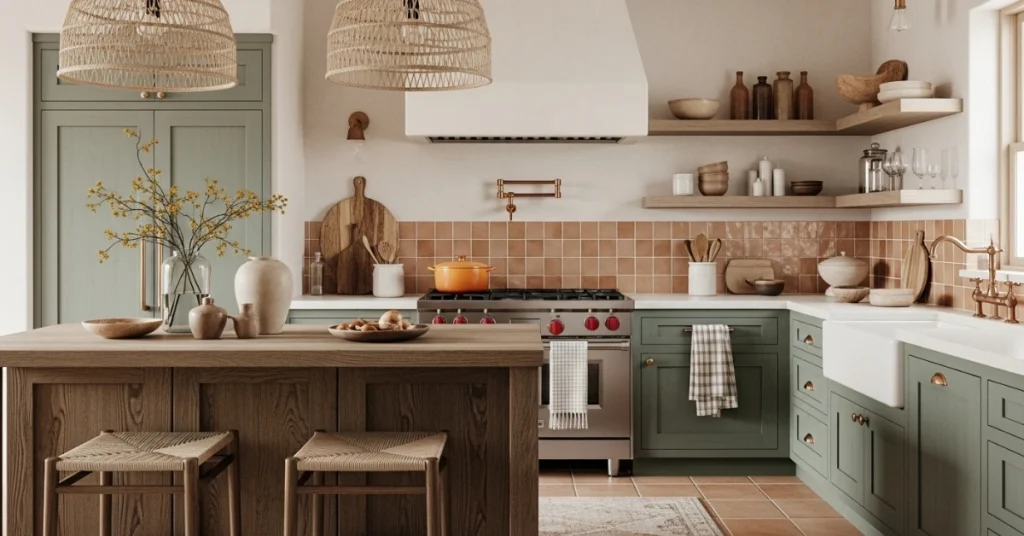
Key Elements of a Desert Kitchen
- Color Palette: Sandy beiges, warm terracotta, sage green, and soft creams.
- Materials: Natural stone, reclaimed wood, clay, and woven fibers.
- Textures: Rough, organic surfaces like stucco walls or handcrafted tiles.
- Accents: Handmade ceramics, cacti, and wrought iron details.
Why Choose a Desert Kitchen Design?
A desert kitchen offers a unique blend of style and practicality, making it ideal for homeowners who want a space that stands out. Here’s why this design trend is worth considering:
- Timeless Appeal: Unlike fleeting trends, desert-inspired designs remain relevant due to their natural, earthy roots.
- Versatility: It works in both modern and traditional homes, adapting to various layouts and sizes.
- Sustainability: Many desert kitchen elements, like reclaimed wood or handmade tiles, align with eco-friendly design principles.
- Cozy Ambiance: The warm tones and textures create a welcoming environment for cooking and gathering.
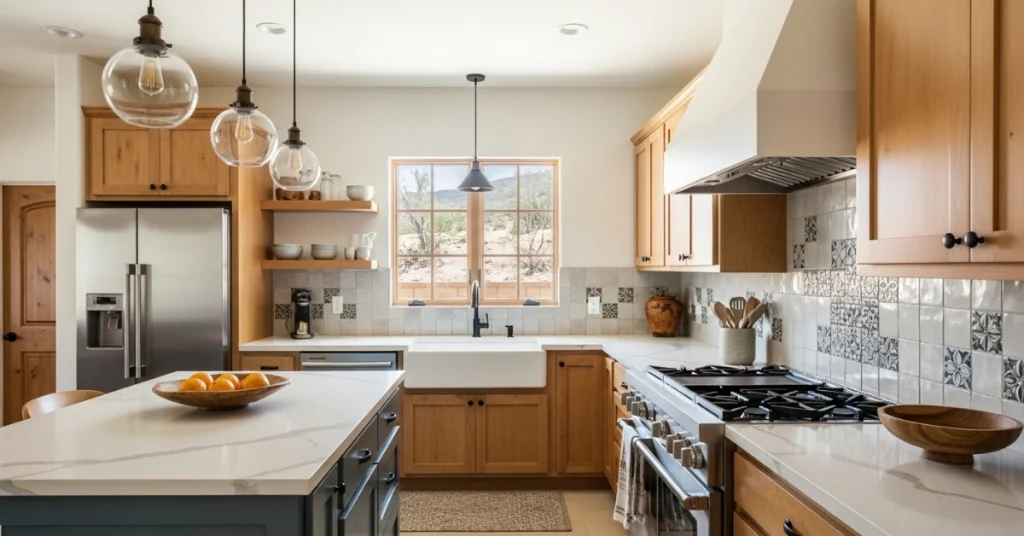
Interior designer Maria Gonzales, who specializes in Southwestern aesthetics, says, “A desert kitchen feels like an extension of the landscape outside. It’s about bringing the calm and beauty of nature into your home.”
Designing Your Desert Kitchen: Step-by-Step Guide
Creating a desert kitchen requires thoughtful planning to balance aesthetics and functionality. Below, we’ll break down the key steps to bring this style to life, complete with practical tips and inspiring ideas.
Step 1: Choose an Earthy Color Palette
The foundation of a desert kitchen is its color scheme, which should evoke the hues of a desert landscape. Stick to warm, muted tones that feel organic and soothing.
- Primary Colors: Sandy beige, terracotta, taupe, and soft white.
- Accent Colors: Sage green, dusty blue, or burnt orange for pops of color.
- Avoid: Overly bright or neon shades that disrupt the natural vibe.
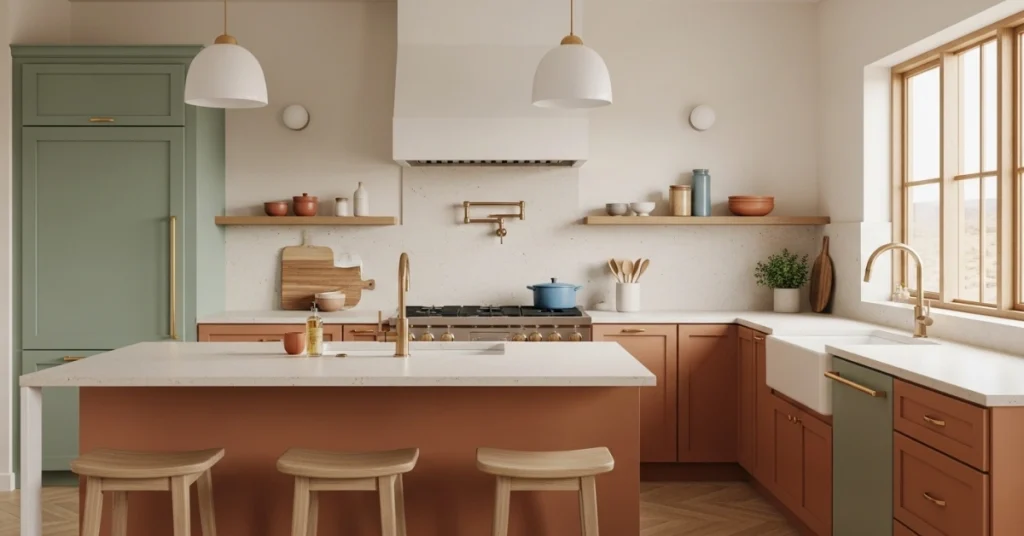
Tip: Paint your walls in a warm beige or off-white shade, like Benjamin Moore’s “Navajo White,” to create a neutral backdrop. For cabinets, consider a soft sage green or a weathered gray to add depth.
Example: In a recent project in Tucson, Arizona, homeowner Sarah L. used terracotta-toned cabinets paired with creamy walls to create a cozy yet modern desert kitchen. The result was a space that felt both timeless and fresh.
Step 2: Incorporate Natural Materials
Natural materials are the heart of a desert kitchen, adding texture and authenticity. Here are some ideas to integrate them:
- Countertops: Opt for natural stone like granite or soapstone in earthy tones. Quartz with a matte finish can mimic the look of desert rock.
- Flooring: Terracotta tiles or reclaimed wood planks add warmth and character.
- Backsplash: Handmade ceramic tiles with subtle patterns or zellige tiles from Morocco create a stunning focal point.
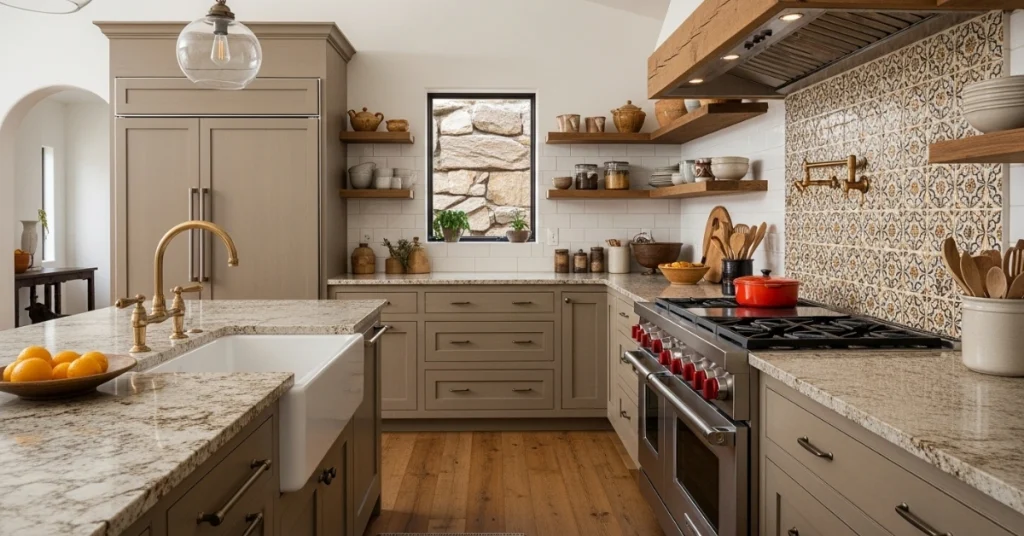
Pro Tip: Mix materials for visual interest. For example, pair a sleek stone countertop with a rustic wooden island to balance modern and traditional elements.
Source: According to Houzz’s 2024 Kitchen Trends Report, 68% of homeowners prefer natural materials like stone and wood for their durability and aesthetic appeal.
Step 3: Add Textural Elements
Texture is key to capturing the rugged beauty of a desert kitchen. Incorporate tactile surfaces to make the space feel lived-in and inviting.
- Woven Accents: Use jute or sisal rugs under the kitchen table or woven baskets for storage.
- Stucco or Plaster Walls: These add a handcrafted, organic feel to the space.
- Wood Beams: Exposed ceiling beams in weathered wood create a rustic charm.
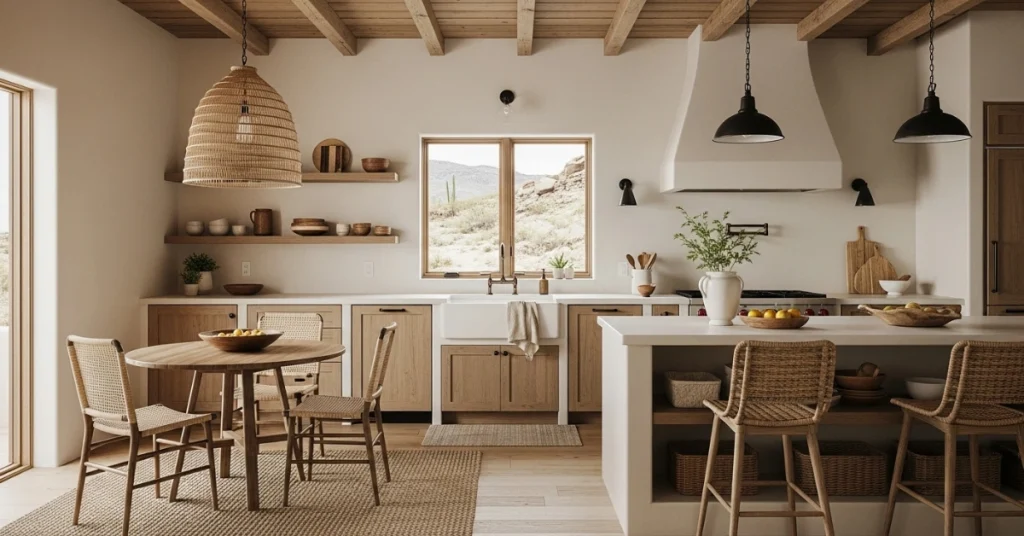
Designer Insight: “Textures are what make a desert kitchen feel authentic,” says designer Elena Martinez. “Don’t be afraid to mix rough surfaces like stucco with smooth ones like polished stone for contrast.”
Step 4: Select Desert-Inspired Decor
Decor brings personality to your desert kitchen. Choose pieces that reflect the simplicity and beauty of desert landscapes.
- Ceramics: Handmade pottery in earthy tones for dishes or decorative vases.
- Plants: Cacti, succulents, or potted aloe add a touch of greenery without overwhelming the space.
- Metallic Accents: Wrought iron or aged brass for cabinet hardware or light fixtures.
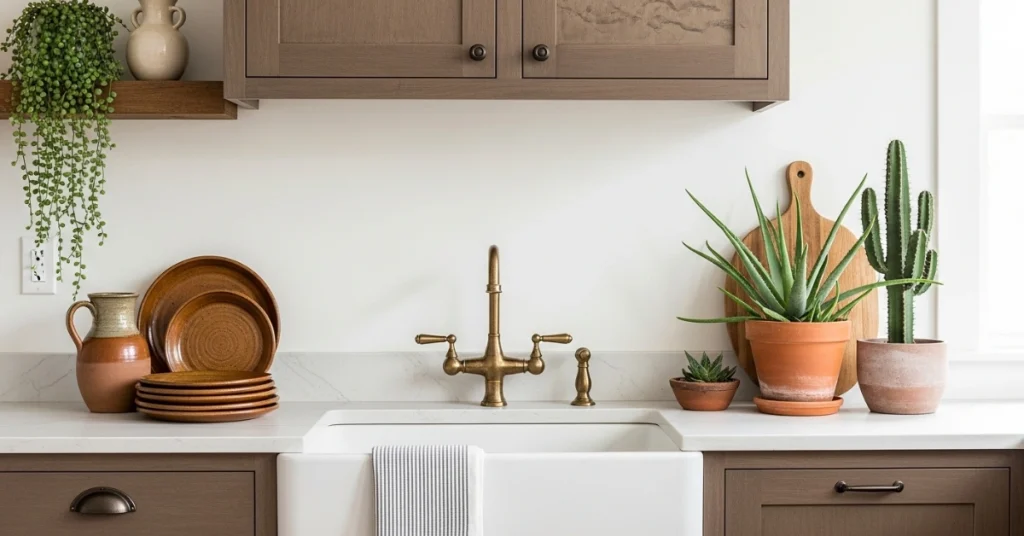
Idea: Create a focal point with a ceramic tile mural behind the stove, depicting desert motifs like cacti or sunsets. This adds a unique, artistic touch to your kitchen.
Step 5: Focus on Functional Layout
A desert kitchen should be as practical as it is beautiful. Consider these layout tips to maximize space and efficiency:
- Open Shelving: Display handmade ceramics or woven baskets on open shelves for a rustic look.
- Island or Peninsula: A central island with a wooden or stone top provides extra prep space and a gathering spot.
- Lighting: Pendant lights with woven or metal shades add warmth and ambiance.
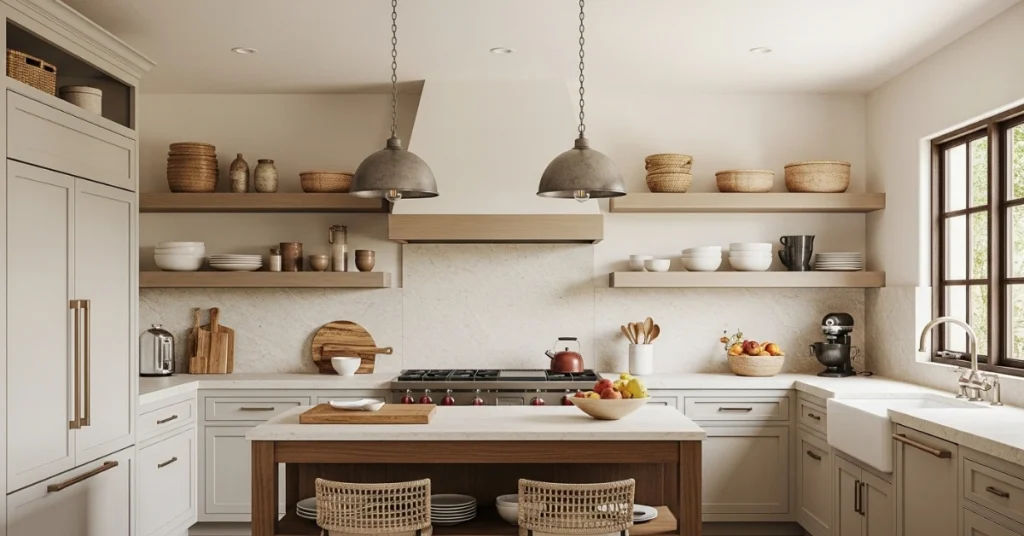
Example: In a small desert kitchen in Santa Fe, homeowner James T. installed open shelving to showcase colorful ceramic plates, freeing up cabinet space while adding visual interest.
Step 6: Incorporate Sustainable Elements
Sustainability is a growing priority for homeowners, and a desert kitchen aligns perfectly with eco-friendly design.
- Reclaimed Materials: Use reclaimed wood for cabinets or shelving to reduce environmental impact.
- Energy-Efficient Appliances: Choose appliances with high Energy Star ratings to save energy.
- Local Sourcing: Support local artisans by purchasing handmade tiles or pottery from nearby craftspeople.
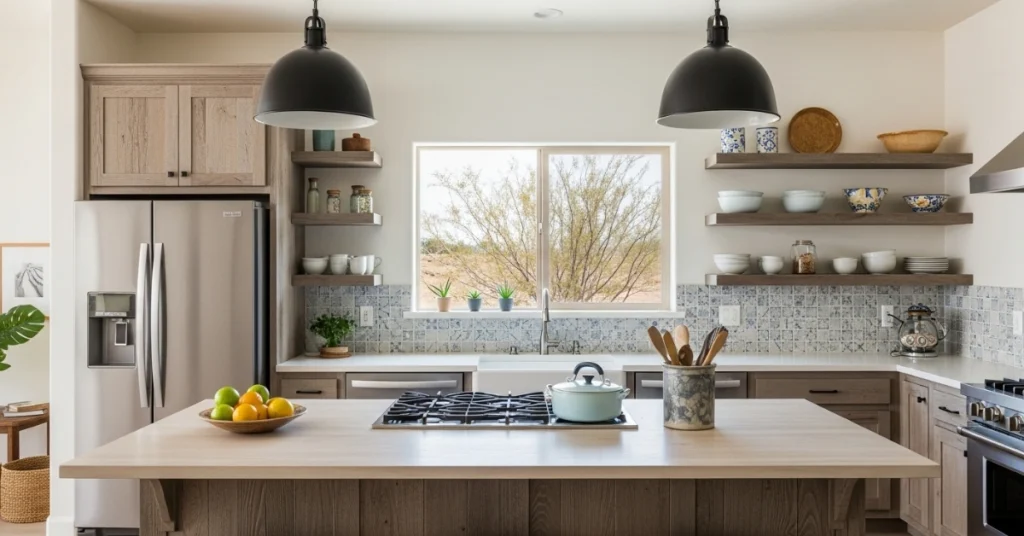
Fact: The U.S. Green Building Council notes that sustainable kitchen designs can reduce energy costs by up to 30%, making them both eco-friendly and budget-friendly.
35+ Desert Kitchen Design Ideas
To spark your creativity, here are over 35 ideas to inspire your desert kitchen, organized by category:
Color and Paint Ideas
- Paint cabinets in a warm terracotta shade for a bold yet earthy look.
- Use a soft sage green for an accent wall to add subtle color.
- Choose a creamy white ceiling to brighten the space without losing warmth.
- Add a dusty blue backsplash for a pop of desert-inspired color.
- Paint trim in a muted ochre to tie the room together.
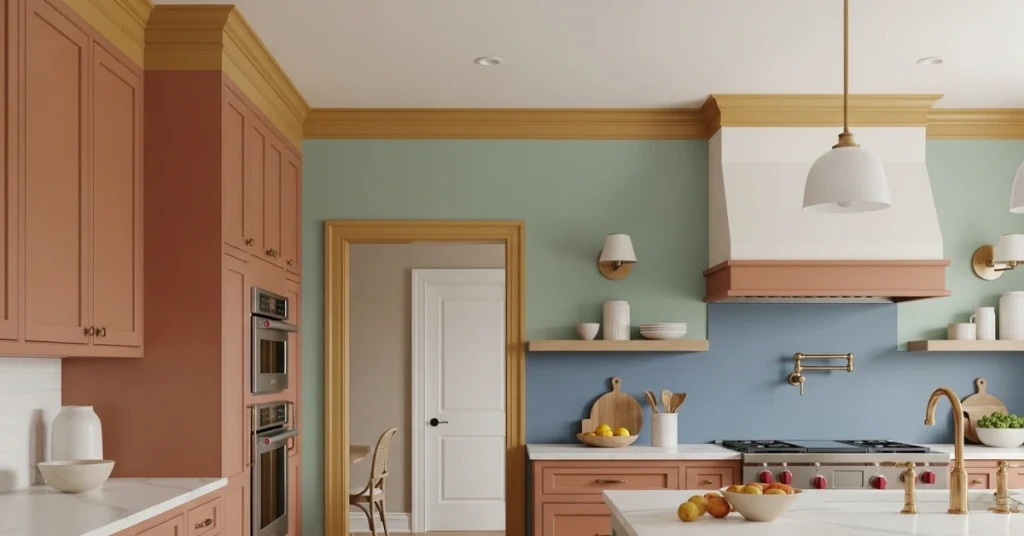
Material and Texture Ideas
- Install terracotta floor tiles in a herringbone pattern for a modern twist.
- Use reclaimed wood for a kitchen island top.
- Add a stucco accent wall behind the sink for texture.
- Incorporate a matte quartz countertop in a sandy beige shade.
- Use woven jute placemats for a rustic dining area.
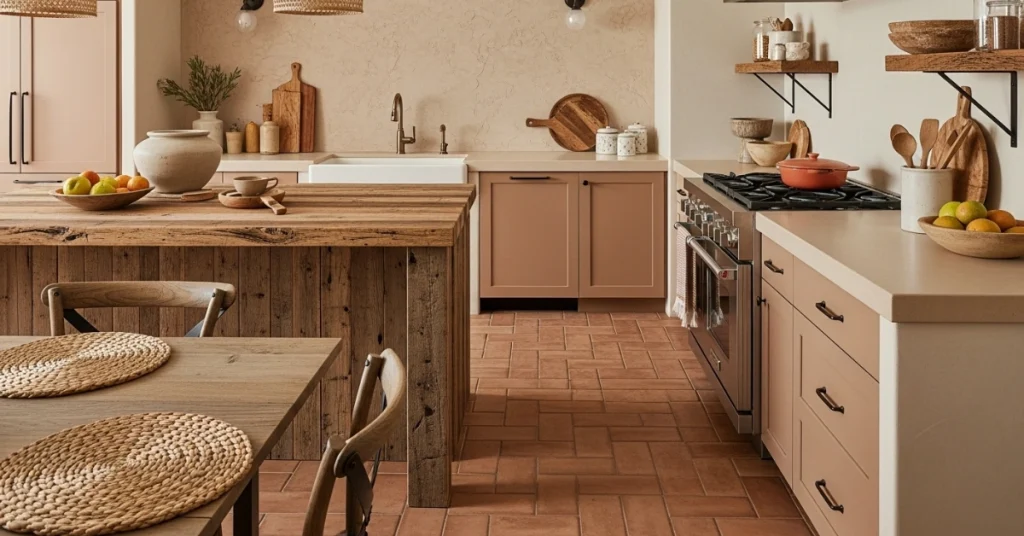
Decor and Accent Ideas
- Display a collection of handmade ceramic bowls on open shelves.
- Hang a wrought iron chandelier above the kitchen island.
- Place a small potted cactus on the countertop for a touch of greenery.
- Use woven baskets for storage under the island.
- Add a terracotta vase with dried desert grasses as a centerpiece.
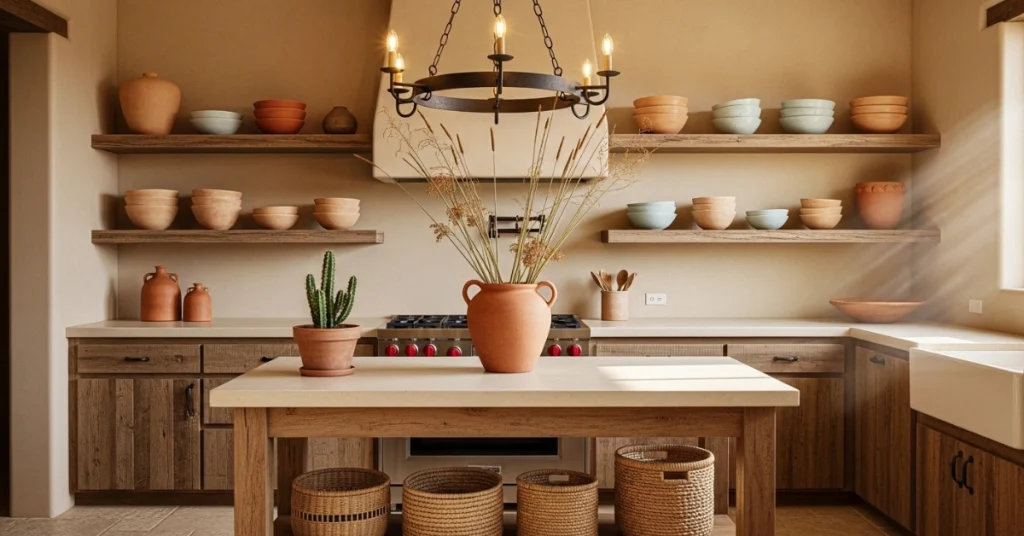
Lighting Ideas
- Install pendant lights with woven straw shades for a bohemian vibe.
- Use recessed lighting to highlight a textured stucco wall.
- Add under-cabinet lighting to illuminate stone countertops.
- Choose aged brass sconces for a warm, vintage feel.
- Hang a statement chandelier with geometric desert-inspired patterns.
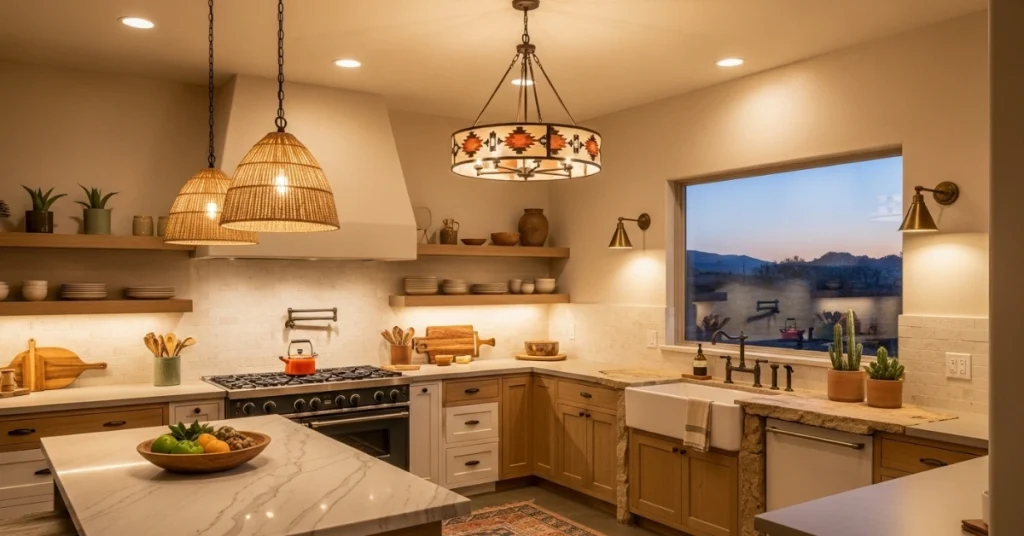
Furniture and Layout Ideas
- Add a wooden dining table with a weathered finish.
- Install a kitchen island with a built-in sink for extra functionality.
- Use bar stools with woven seats for a cohesive look.
- Create a cozy breakfast nook with a built-in bench and cushions.
- Incorporate open shelving to display desert-inspired decor.
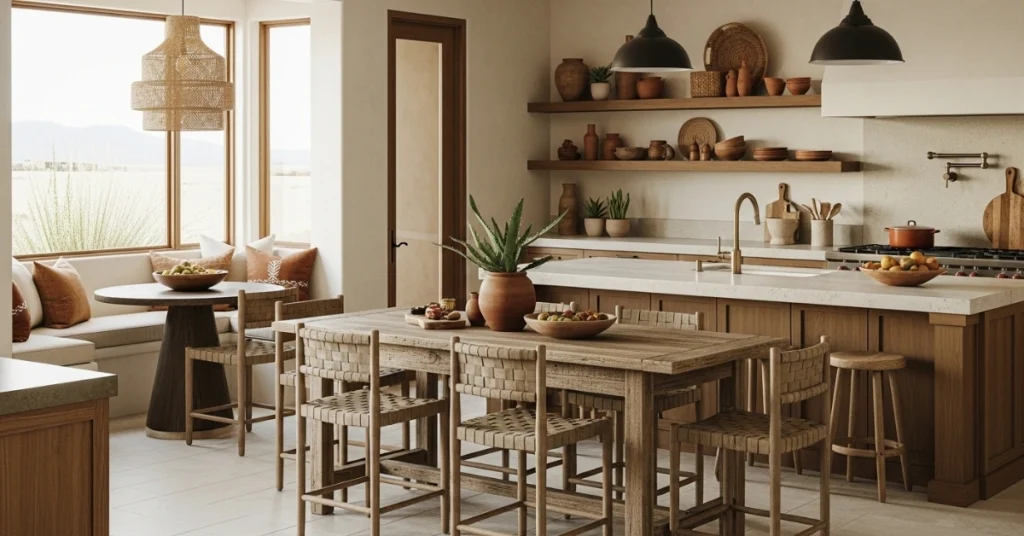
Backsplash and Wall Ideas
- Use handmade zellige tiles for a shimmering, textured backsplash.
- Install a ceramic tile mural with desert motifs like cacti or sunsets.
- Add a stucco finish to one wall for a rustic accent.
- Use subway tiles in a sandy beige shade for a modern desert look.
- Create a feature wall with reclaimed wood planks.
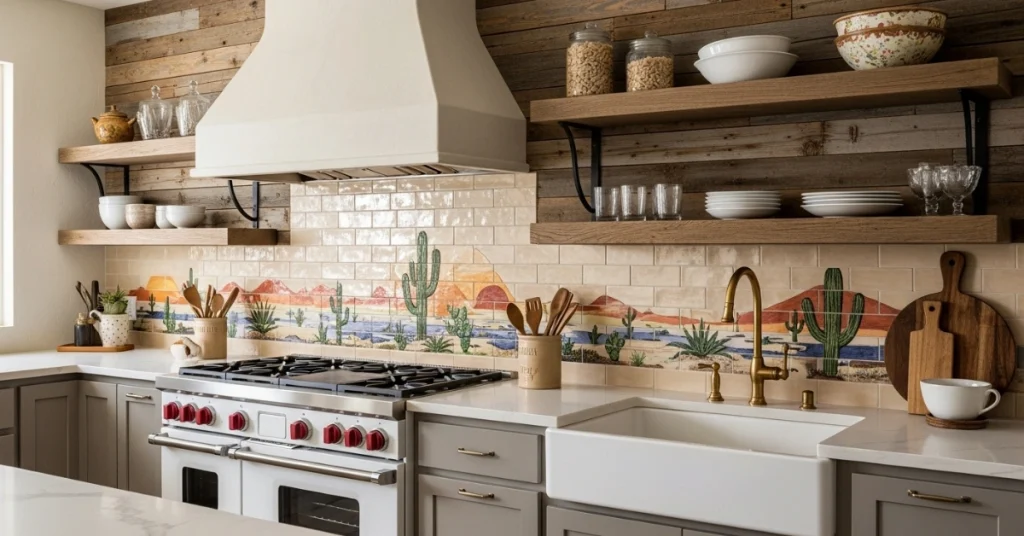
Sustainable and Functional Ideas
- Choose energy-efficient appliances in a matte black finish.
- Use reclaimed wood for open shelving to reduce waste.
- Install a low-flow faucet to conserve water.
- Source handmade tiles from local artisans for authenticity.
- Add a compost bin disguised as a woven basket for eco-friendly waste management.
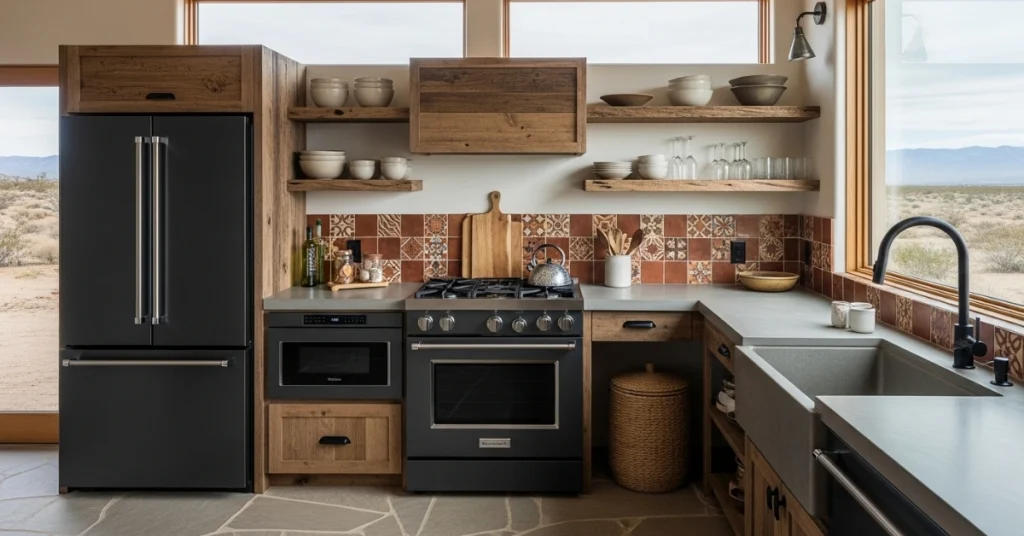
Common Mistakes to Avoid in a Desert Kitchen
While designing your desert kitchen, steer clear of these pitfalls:
- Overloading with Decor: Too many accents can make the space feel cluttered. Stick to a few statement pieces.
- Ignoring Functionality: Ensure your layout prioritizes ease of use, with ample counter space and storage.
- Using Harsh Colors: Bright or neon shades disrupt the earthy vibe. Stick to muted, natural tones.
- Neglecting Lighting: Poor lighting can make the space feel flat. Layer ambient, task, and accent lighting for balance.
Designer Tip: “Less is more in a desert kitchen,” says interior designer Liam Carter. “Choose a few high-quality materials and let their natural beauty shine.”
How to Maintain Your Desert Kitchen
To keep your desert kitchen looking stunning and functional, follow these maintenance tips:
- Clean Natural Stone: Use a pH-neutral cleaner for stone countertops to avoid damage.
- Protect Wood Surfaces: Apply a food-safe sealant to wooden countertops or islands annually.
- Care for Tiles: Seal terracotta or ceramic tiles to prevent staining from spills.
- Dust Textiles: Regularly clean woven rugs or baskets to prevent dust buildup.
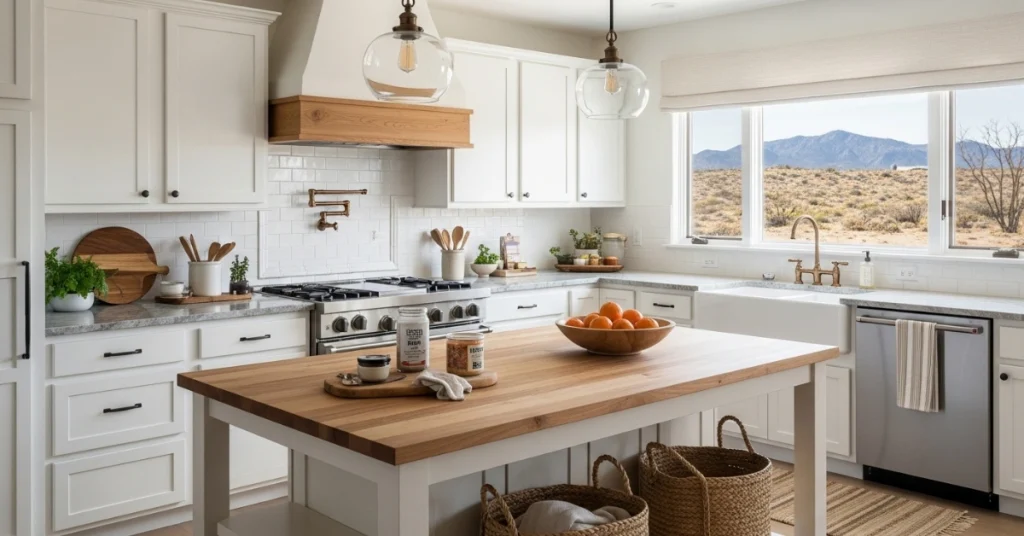
Example: Homeowner Emily R. in Phoenix found that sealing her terracotta floor tiles every two years kept them vibrant and stain-free, even with heavy use.
Conclusion:
A desert kitchen is more than just a design trend, it’s a lifestyle choice that brings warmth, authenticity, and timeless beauty to your home. By blending earthy colors, natural materials, and thoughtful decor, you can create a space that’s both functional and inspiring. Whether you’re starting from scratch or refreshing an existing kitchen, the ideas and tips in this guide will help you craft a desert kitchen that feels like your own personal oasis.
Ready to get started? Begin by choosing a color palette or material that speaks to you, and let your creativity flow. Share your desert kitchen journey in the comments below, or contact a local designer to bring your vision to life!

